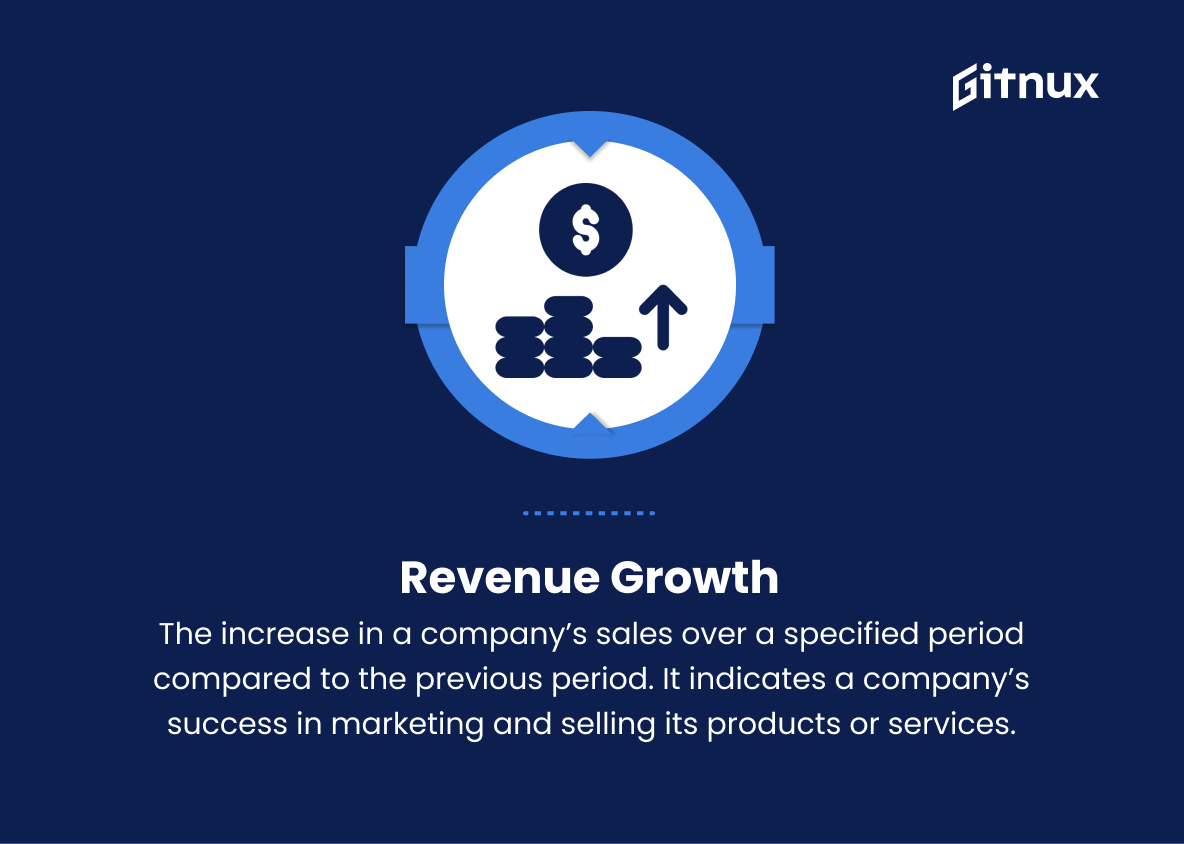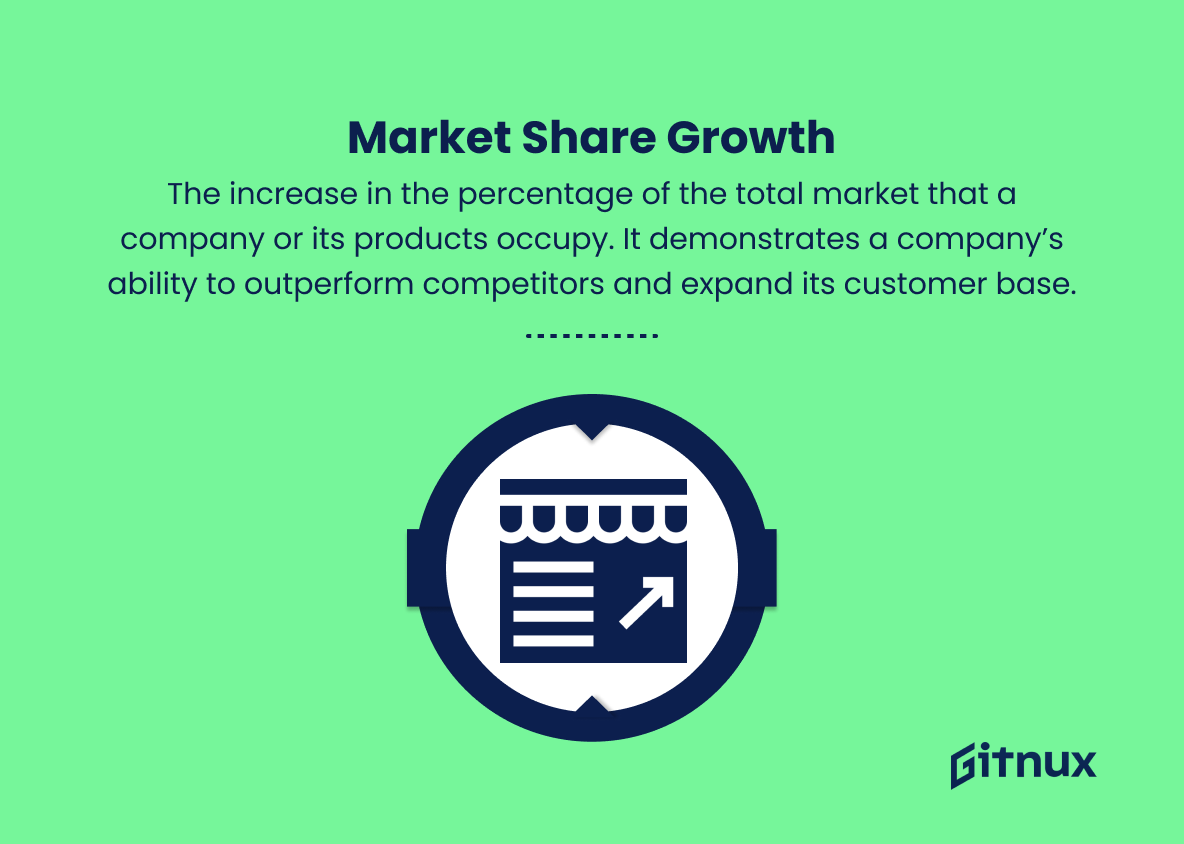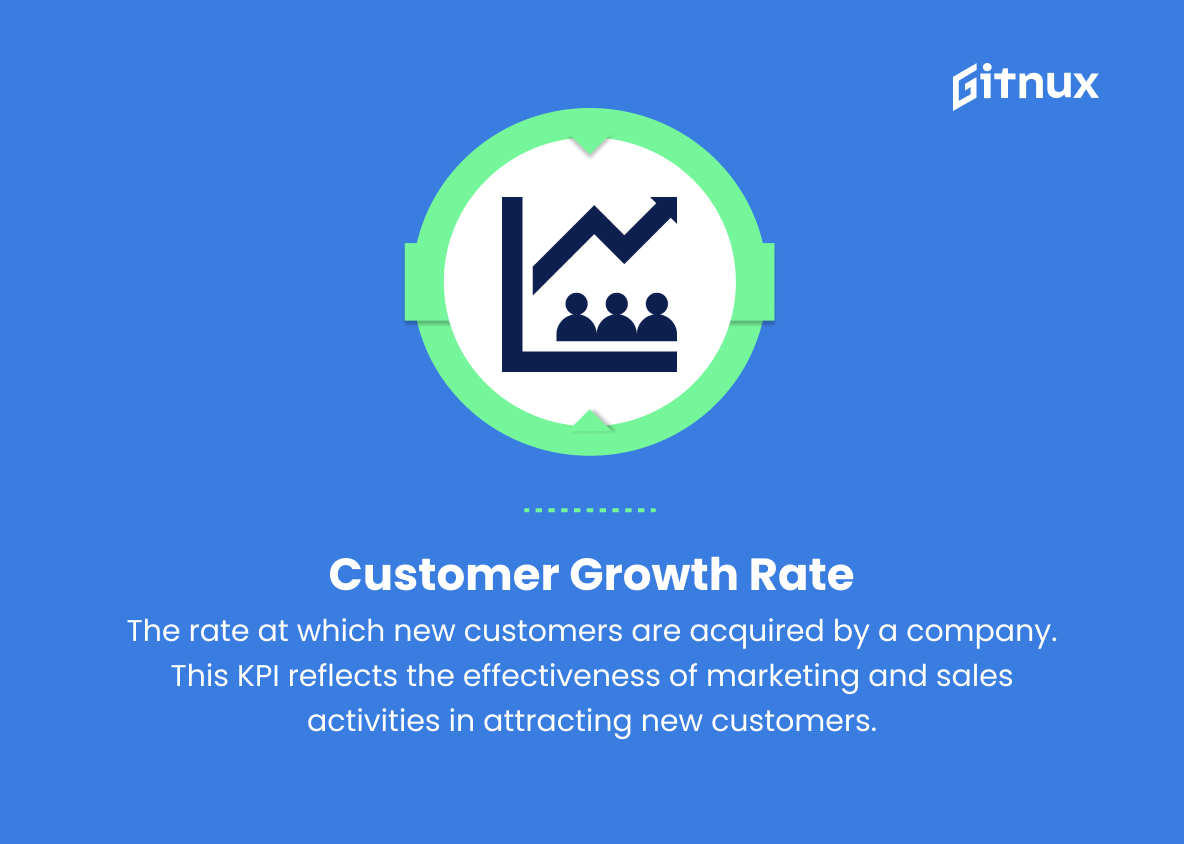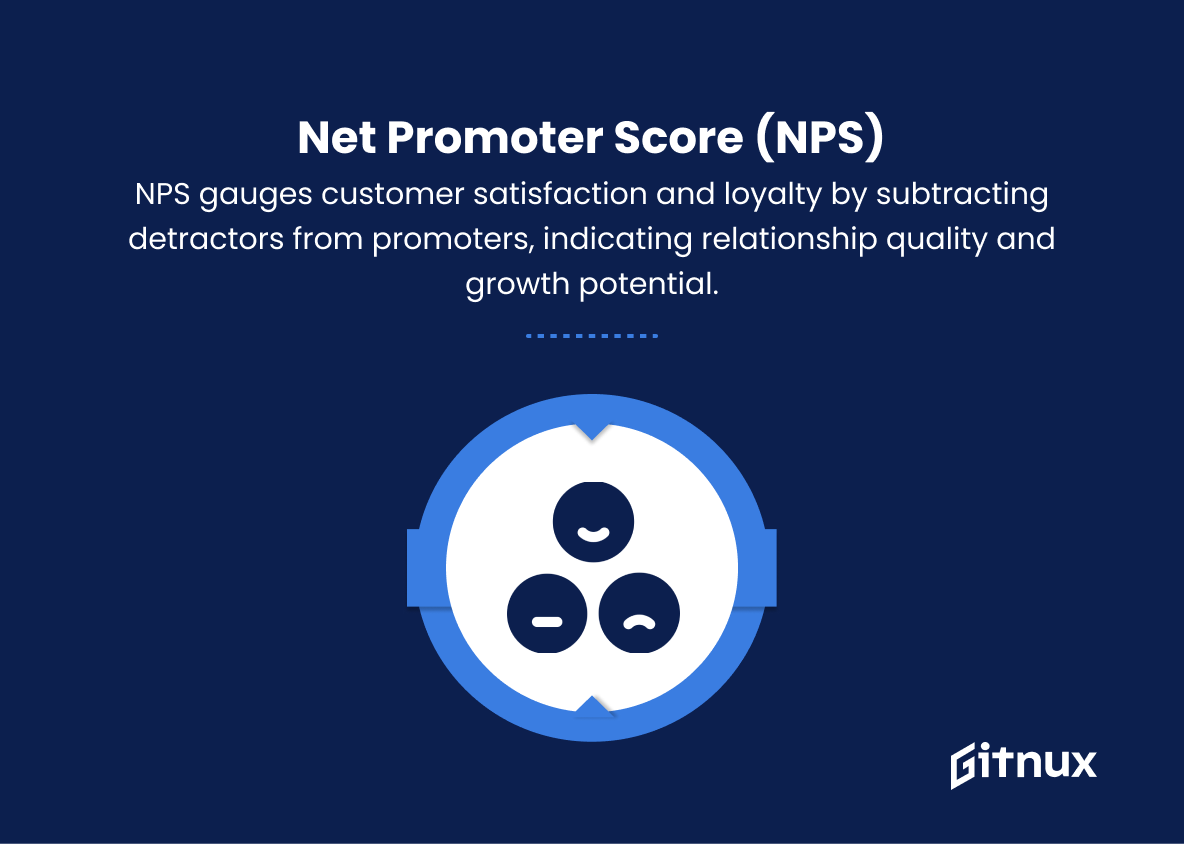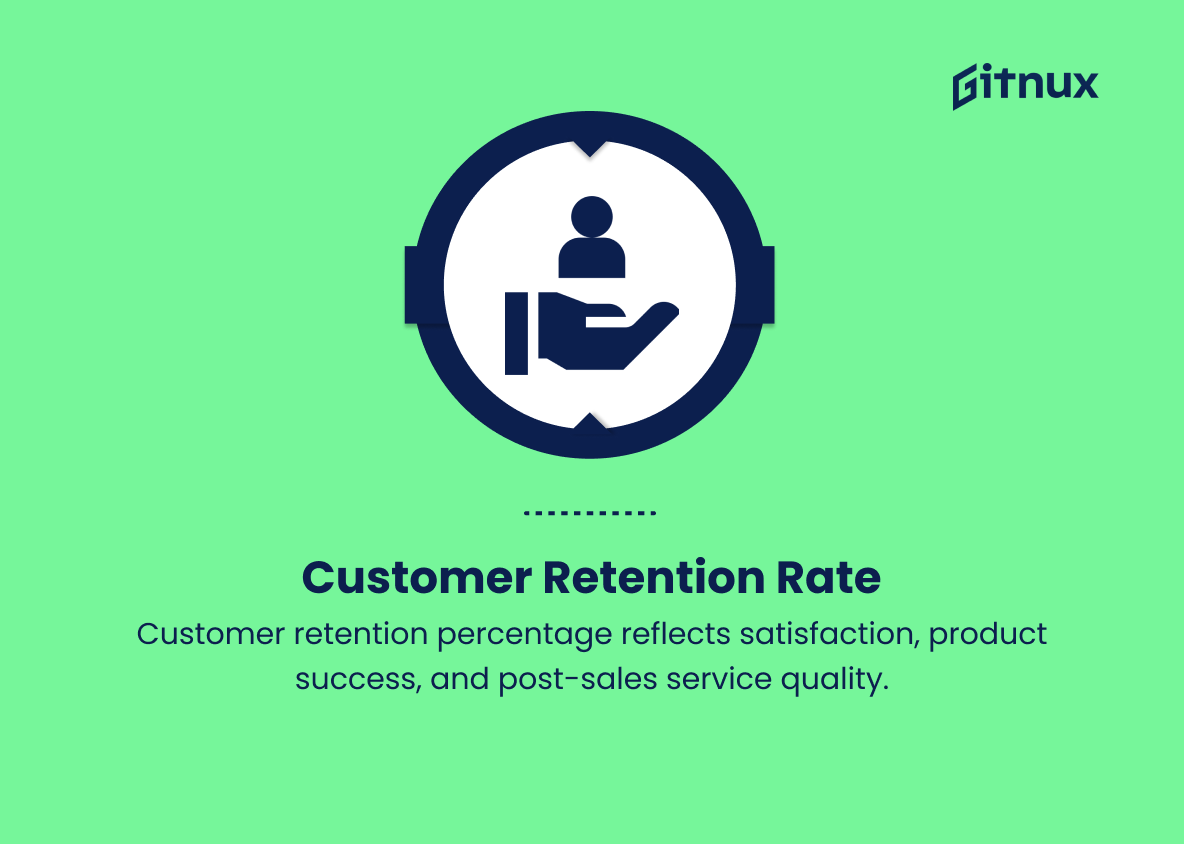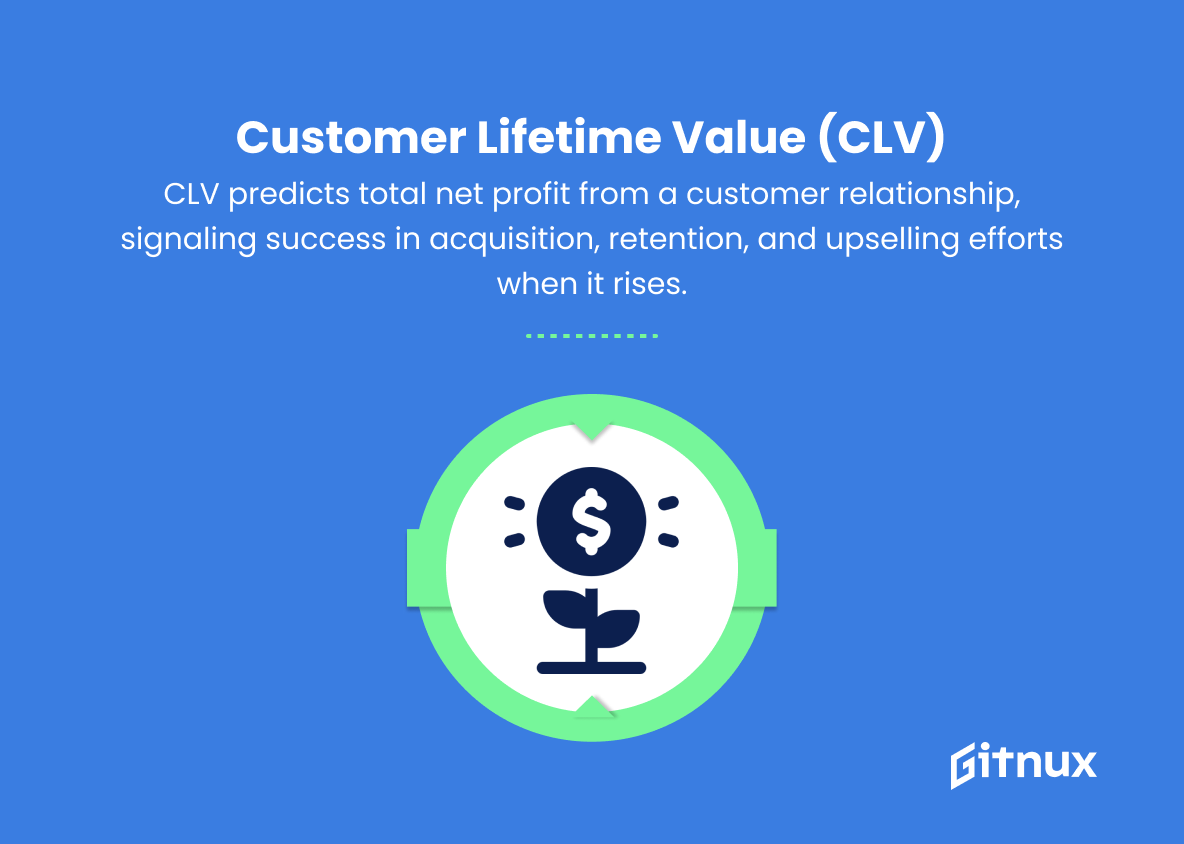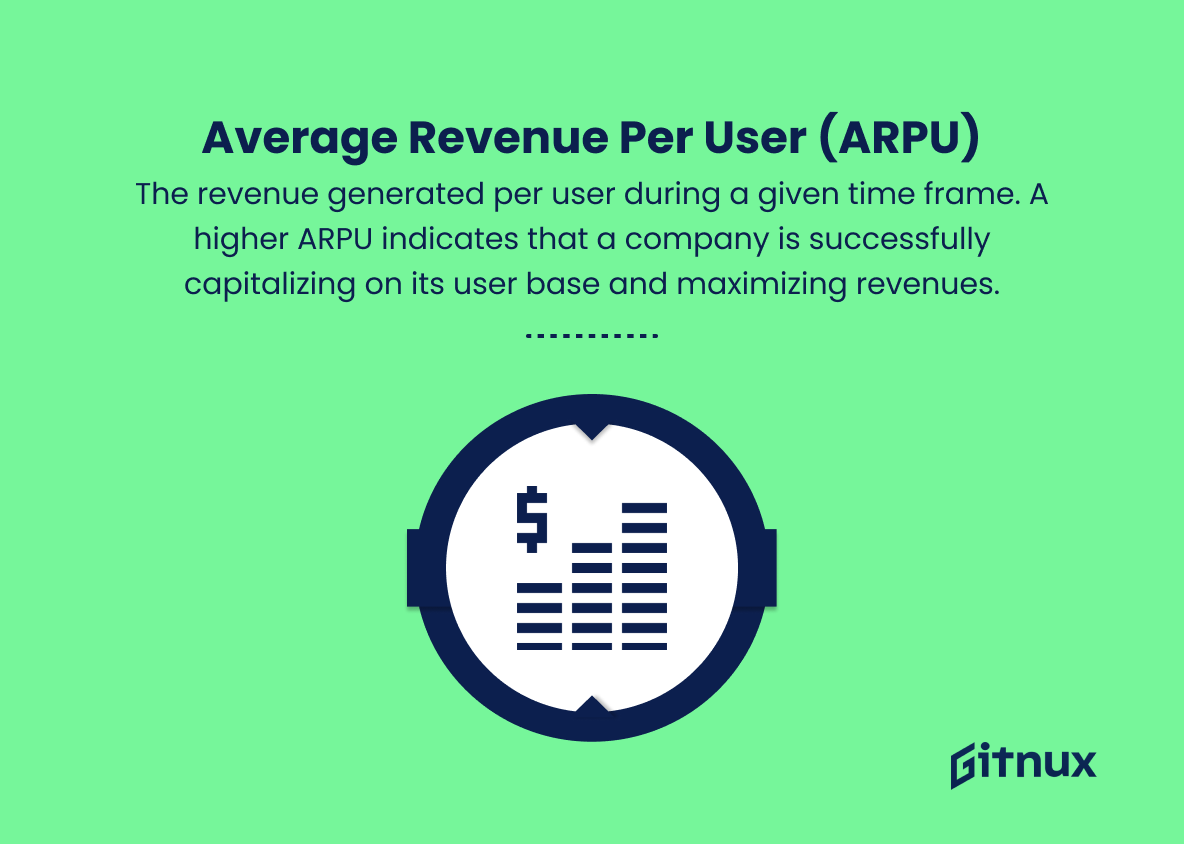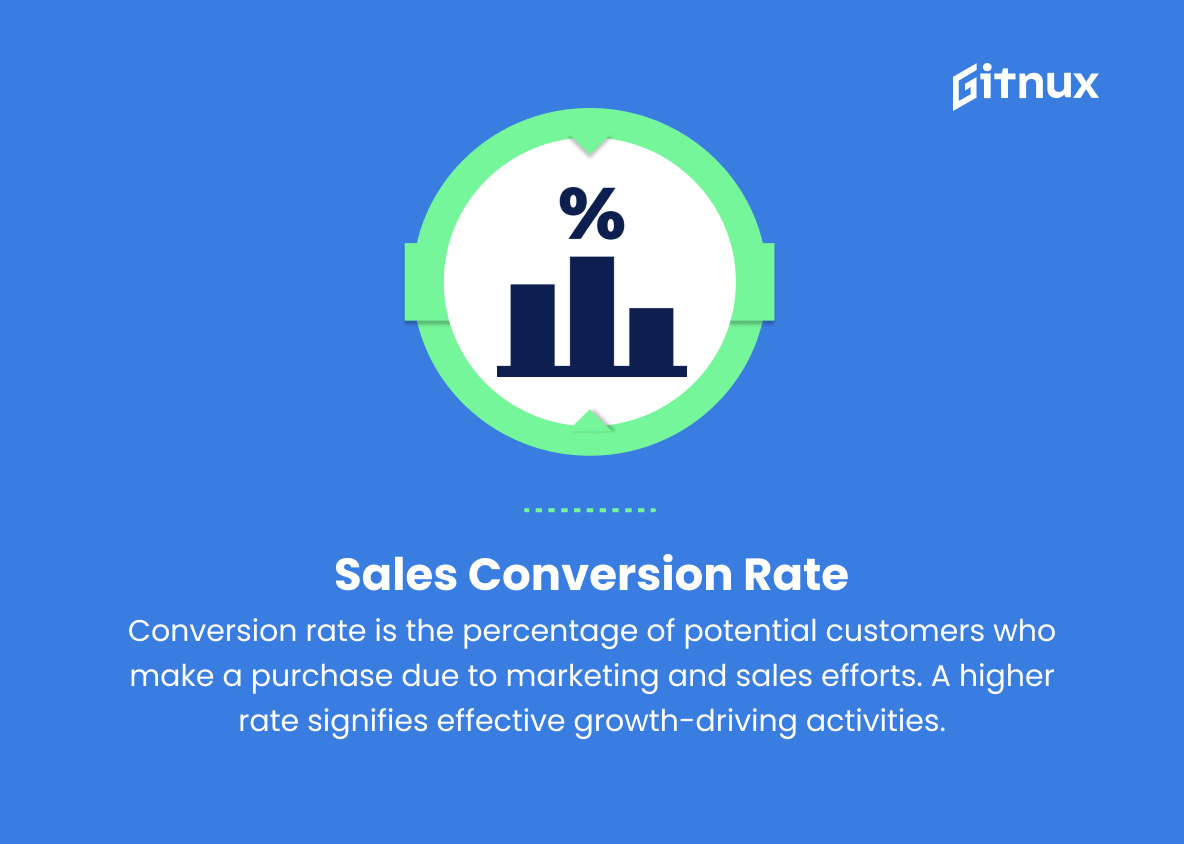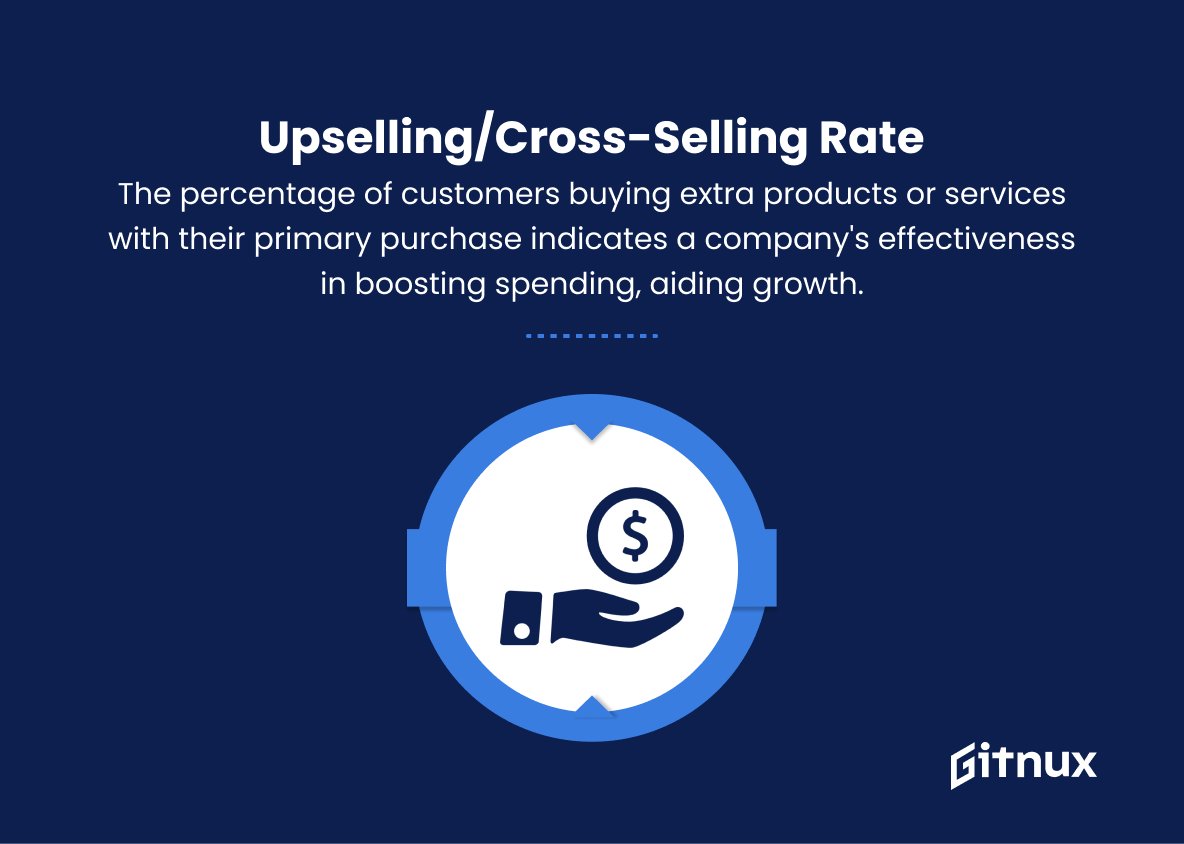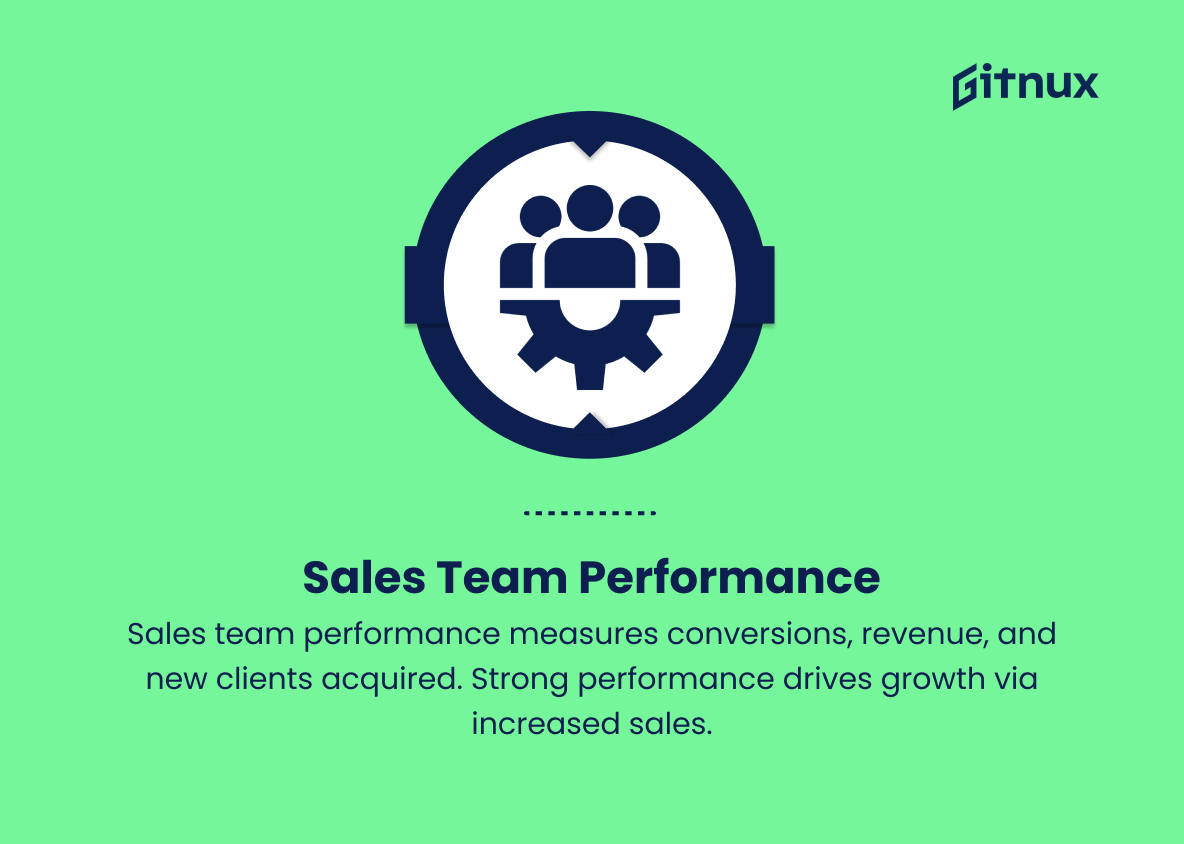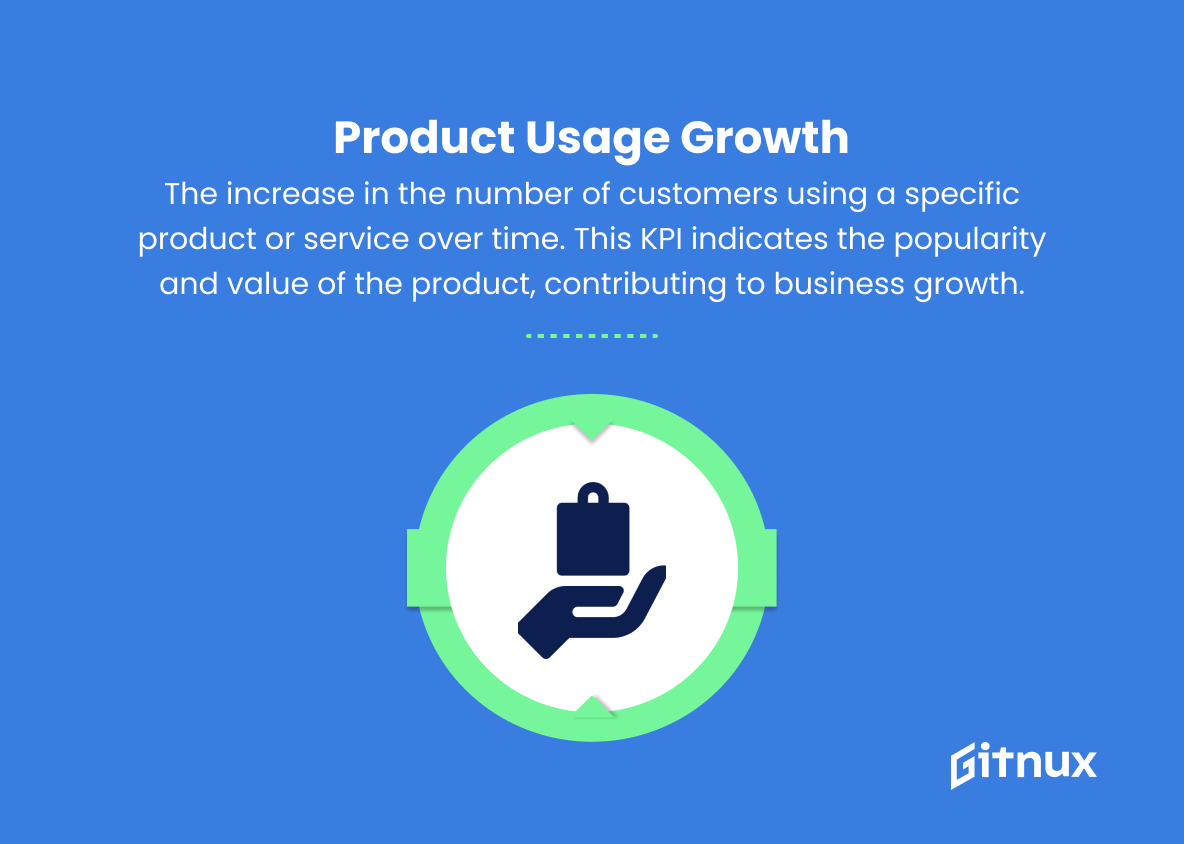In today’s dynamic business environment, a company’s success is often defined by its ability to grow and adapt to an ever-changing marketplace. To accurately gauge progress and ensure long-term prosperity, companies must track and measure critical performance indicators known as growth key performance indicators (KPIs).
These critical metrics enable organizations to assess their growth trajectory, make informed decisions, and fine-tune their strategies for maximum impact. In this in-depth blog post, we will explore the different types of growth KPIs, their relevance across industries, and how companies can effectively use them to unlock their full potential and achieve sustainable success.
Growth KPIs You Should Know
1. Revenue Growth
The increase in a company’s sales over a specified period compared to the previous period. It indicates a company’s success in marketing and selling its products or services.
2. Market Share Growth
The increase in the percentage of the total market that a company or its products occupy. It demonstrates a company’s ability to outperform competitors and expand its customer base.
3. Customer Growth Rate
The rate at which new customers are acquired by a company. This KPI reflects the effectiveness of marketing and sales activities in attracting new customers.
In today’s dynamic business landscape, the success of a venture is often defined by its ability to grow and adapt to an ever-changing market.4. Net Promoter Score (NPS)
A measure of customer satisfaction and loyalty, calculated by taking the percentage of customers who are promoters (highly satisfied) and subtracting the percentage of detractors (dissatisfied). A higher NPS indicates better customer relationships and potential for growth.
5. Customer Retention Rate
The percentage of customers who remain with a company over a given period. High retention rates indicate customer satisfaction, successful product offerings, and good after-sales services.
6. Customer Lifetime Value (CLV)
The predicted net profit attributed to the entire future relationship with a customer. An increasing CLV indicates successful efforts in customer acquisition, retention, and upselling.
7. Churn Rate
The percentage of customers that discontinue their relationship with a company during a given period. A lower churn rate suggests better customer satisfaction and experience, contributing to growth.
8. Average Revenue Per User (ARPU)
The revenue generated per user during a given time frame. A higher ARPU indicates that a company is successfully capitalizing on its user base and maximizing revenues.
Growth KPIs, such as revenue growth, market share growth, and customer growth rate, are crucial indicators of a company’s success in marketing, selling, and retaining its customer base.9. Sales Conversion Rate
The percentage of potential customers who complete a purchase after interacting with a company’s marketing and sales efforts. A higher conversion rate suggests that marketing and sales activities are successful in driving growth.
10. Upselling/Cross-selling Rate
The percentage of customers who purchase additional or complementary products or services along with their primary purchase. An increased rate implies a company’s effectiveness in encouraging customers to spend more, contributing to growth.
11. Sales Team Performance
Measures the effectiveness of a sales team in terms of conversions, revenue generated, or new clients acquired. High sales team performance leads to growth through increased sales.
12. Product Usage Growth
The increase in the number of customers using a specific product or service over time. This KPI indicates the popularity and value of the product, contributing to business growth.
13. Web Traffic Growth
The increase in the number of website visits, page views, or unique visitors. A growing web traffic indicates successful digital marketing and awareness-building efforts, leading to potential customer acquisition and growth.
14. Social Media Engagement Growth
The increase in interactions, such as likes, shares, and comments, on a company’s social media channels. Higher engagement rates indicate improved brand visibility and potential growth in customer base.
15. Email Marketing Performance
Measures the success of email marketing campaigns, including open rates, click-through rates, and conversions. Improved email marketing performance leads to customer engagement and growth.
Growth KPIs Explained
Growth KPIs such as revenue growth, market share growth, and customer growth rate are critical indicators of a company’s success in marketing, selling, and retaining its customer base. Metrics such as Net Promoter Score, customer retention rate, and customer lifetime value highlight the effectiveness of a company’s efforts to maintain customer satisfaction and loyalty. In addition, metrics such as churn rate, average revenue per user, and sales conversion rate provide insight into the company’s ability to retain customers and maximize revenue.
Upsell/cross-sell rate and sales team performance contribute to growth by demonstrating a company’s effectiveness in driving incremental spend and new customer acquisition. In addition, product usage growth, web traffic growth, social media engagement growth, and email marketing performance are key indicators of a company’s digital marketing success, brand awareness, and potential customer base growth. Overall, monitoring these growth KPIs enables companies to strategize and optimize their processes to drive sustainable growth and outperform competitors.
Conclusion
In summary, growth KPIs are the critical touchstones in the development and success of any business or organization. As we have explored in this blog post, understanding and implementing these key performance indicators allows decision makers to make informed strategic decisions, optimize resources, and ultimately drive their business to its full potential.
With the ever-changing business landscape, staying on top of growth KPIs fosters a proactive approach that ensures the organization stays ahead of the competition and continues to thrive in their respective industries. By integrating these critical metrics into your business strategy, you can lay the foundation for sustainable growth and long-term success.
